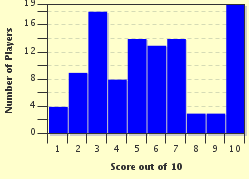Quiz Answer Key and Fun Facts
1. The Arctic fox has the distinction of being the only land mammal native to which of these places?
2. Bubo scandiacus is a white bird living in the northern regions of the globe. It is the official bird of the Canadian province of Quebec and has appeared in a popular series of books. What is its most common name?
3. The International Agreement of the Conservation of Polar Bears was signed in 1973 by five countries. Which of these was NOT one of them?
4. Known as a weasel, or stoat, in its summer coat, by what name is the same creature known when it has its white, winter, fur?
5. The snow goose migrates south to breed in spring.
6. The Arctic hare is often described as a folivore, meaning it eats which of these?
7. The smallest reindeer subspecies is named for which archipelago, belonging to Norway?
8. Although the wolverine doesn't change the colour of its coat, its young are born white. What name is given to them?
9. The ptarmigan, or rock ptarmigan, changes plumage from brown to white in winter. To which family does it belong?
10. The only rodent to turn white during the Arctic winter (maybe proving that it doesn't have a death wish) lives in Greenland and the northern areas of the USA and Canada. Which of these is it?
Source: Author
rossian
This quiz was reviewed by FunTrivia editor
guitargoddess before going online.
Any errors found in FunTrivia content are routinely corrected through our feedback system.

